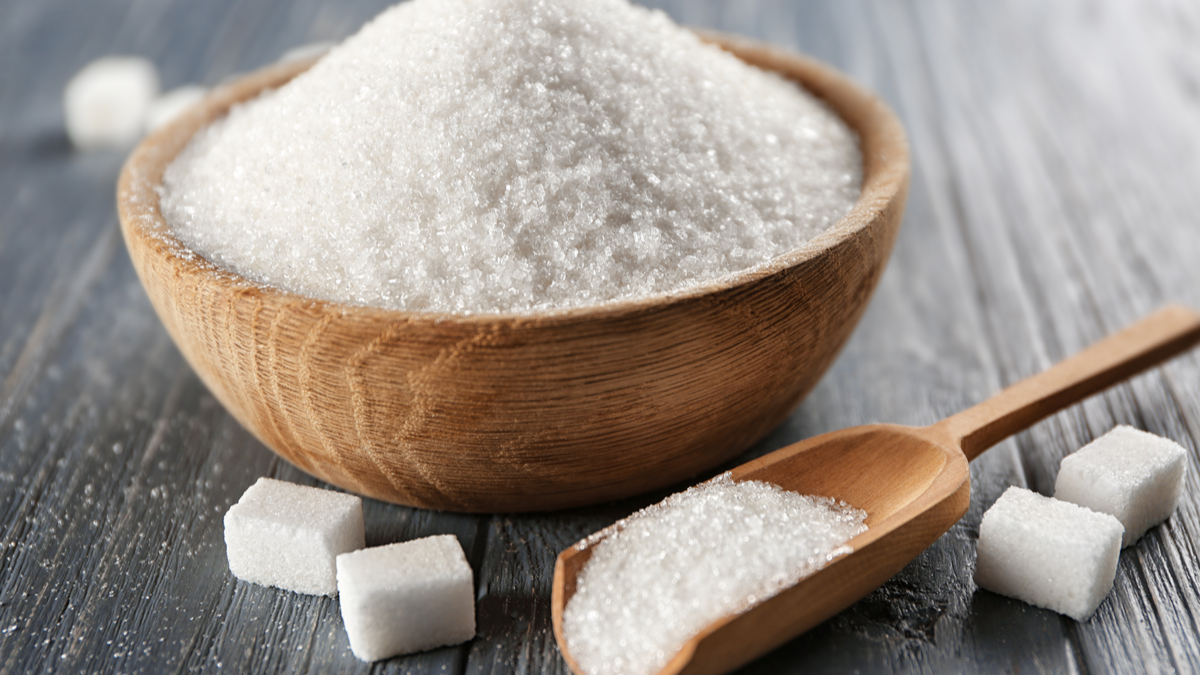The low carb high fat diet has become hugely popular. Here, nutritionist, low-carb author, and expert and regular contributor to Top Santé, Sarah Flower explains why, plus how to make it work for you.
Low carb eating has become hugely popular, thanks largely to the ketogenic way of eating, which has spread like wildfire thanks to lots of celebrities being fans.
But low-carb eating in our Western society can be incredibly difficult, as carbs, especially the refined, processed ones, are everywhere, not least in most snack foods.
Sugar is in savoury foods too
Sugar is in most pre-prepared foods, including savoury ones. Savoury foods with sugar include pasta sauces, tomato sauce, slices of bread, gravy powder, processed meats, herb and spice mixes, ready meals.
You also have all the sweet foods – yogurts, cakes, biscuits, ice cream, desserts, etc and what should be seen as desserts is our breakfast aisles which can contain horrifying amounts of sugar.
Remember, food manufacturers keep the sugar on labels lower by stating a serving portion of 25-30g but who has this amount for breakfast?! I run cookery classes in schools and asked a class of 8-year-olds to weigh out what they normally have for breakfast. The results ranged from 70-90g per serving.
Don’t forget the sugar in your drinks
Add to our daily sugar hits and we need to include drinks, squashes, mixers, flavoured waters, fizzy drinks, some instant milky coffees.
We also need to consider natural sugars in supposedly healthy food – orange juices, smoothies, date-based bars, granola, muesli, salad creams/dressings etc. Many manufacturers have cottoned on to the sugar-free ideal but are using fruit syrups and concentrates instead, which again, is just a sideways step.
We also have natural sugars in dairy in the form of lactose, so that innocent skinny latte could be punching quite a kick of sugar.
Learn to understand the food labels
Remember when you are reading a label, if you are diabetic, look at the carbohydrates, not the sugars. So if the carbohydrates are 40g, that in a very basic form, breaks down to around 10 tsp of sugar in the form of glucose. Our food labels show net carbs, so the fibre has already been removed from the carb figure.
First and foremost, educate yourself. This is the most powerful tool to success for any change in life, especially dietary changes.
Sugar is in everything and just cutting out refined sugar, although a step, is often only a sideways step as we replace this with what we consider healthier options such as dried fruit, fruit syrups, honey, and maple syrup. Although they have a little more nutrients than sugar, they are still processed the same way.
Sugar-free and low carb curbs your appetite
We also need to watch our carbohydrates. The amazing thing about going sugar-free and low carb is it curbs your appetite, so you are not constantly fighting hunger in the same way you do when you are following a low-calorie diet (which by its very nature is really more a high carb diet as carbs are half the calories of fat).
We have hormones that govern our hunger and cravings. These work with insulin, which is stimulated when you eat, but especially when you eat carbohydrates. This stimulates a hormone called ghrelin which sits in your stomach and growls at you to feed it more and more.
Why you’re always hungry on a high-carb diet
Carbohydrates and fructose also turn off our leptin response – this is a hormone that tells our brain when we are full. Hence when we eat a high carbohydrate diet, we get more cravings, more hungry, and don’t feel full.
Switch to a low-carb diet, full of healthy, satisfying natural fats and we no longer stimulate the hunger cravings. Don’t try and reduce sugar and carbs and go low fat, that is a recipe for disaster.
So how can you lose weight with low-carb, high-fat eating? These tips will help:
Do your low carb high fat calculations
Food labelling can be tricky to decipher. A general rule of thumb is to look at the sugar content on the nutritional information and compare this to the serving size the values refer to.
So, 4g of sugar is the equivalent of a teaspoon. The World Health Organisation recommends no more than approx. 6 tsp per day for an adult (25g) and 12g (3 tsp) for a child aged 4-11 years and zero for under 2 years old. Some low-fat yogurts can contain up to 7 tsp of sugar, pasta sauce up to 11 tsp of sugar, bread up to 1 tsp per slice.

Learn to recognise sugars on the label
Your body doesn’t differentiate between refined or unrefined sugar, honey or agave, grape juice or cane juice, dates or Muscavado sugar – it is all converted in exactly the same way. It all spikes your blood sugars and all contains the more detrimental fructose.
There are a huge number of names for sugar, here are just a few:
Acesulfame k, agave nectar, beet sugar, brown rice syrup, buttered syrup, cane juice crystals, caramel, castor sugar, coconut sugar, corn sweetener, corn syrup solids, date sugar, dextran, diatase, ethyl maltol, fruit sugar, glucomalt, glucose solids, golden syrup, isomalt, levulose, maltitol, maltose, mannose, molasses, and muscovado.
… and some more sugars
Oat syrup, palm sugar, powdered sugar, refiners syrup, rice malt syrup, saccharin, sorbitol, sorghum syrup, sucrose, treacle, turbinado sugar, xylose, acesulfame potassium, aspartame, barley malt, blackstrap molasses, brown sugar, cane juice, cane sugar, carob syrup, coconut palm sugar, confectioners sugar, and corn syrup.
… and some more sugars
Crystalline, demerara sugar, dextrose, diastatic malt, evaporated cane juice, fructose, fruit juice concentrate, galactose, glucose, golden sugar, grape juice concentrate, high-fructose corn syrup, icing sugar, and isoglucose.
… and even more sugars!
Lactose, malt syrup, maltodextrin, mannitol, maple syrup, molasses syrup *neotame, organic raw sugar, panocha, raw sugar, rice bran syrup, rice syrup, saccharose, sorghum sucralose, tapioca syrup, trehalose.
Switch to a natural sweetener
You can switch to using a natural sweetener that has no impact on blood sugars or insulin and contains zero fructose. This would be Xylitol (sounds unnatural but it is made from a wood bark).
This is available in most supermarkets and the most popular brand is Total Sweet. You can also use Stevia, made from natural stevia leaf, but this is about 300x as sweet as sugar so not so easy to use in recipes. I find buying in liquid form is useful as it only needs a few drops.
You can also use erythritol. Again, this sounds like a scary unnatural sweetener but it comes from plants and is made from an alcohol. It does not affect blood sugar or cause an insulin response and, just like xylitol, you can use it just as you would sugar. I like the brands Sukrin and Natvia.
You can get used to less sugar
I did an experiment with a school and we reduced sugar in all recipes by 10% every week or two. We took it to over 40% before it affected the taste or texture of the food – no one noticed. That means we are consuming 40% of unnecessary sugar! Remember as you cut out sugar, your palate changes and you require less and less sweet things.
Improve your health by cooking from scratch
Remember every time you eat or drink you are either feeding disease or fighting it. Your health will dramatically improve if you cook from scratch and cut out the food manufacturer.
Processed food is often full of sugar, salt, and unhealthy fats. Eating real food is packed with nutrients, antioxidants and is colourful (not beige coloured like most man-made food). If you read the label and don’t recognise the ingredients, move on.
You should not need a chemistry degree to decipher your food.
Sarah Flower is the author of numerous health and cookery books including Eating to Beat Type 2 Diabetes (£10.99), The Sugar-Free Family Cookbook (£12.99), and Low Carb Slow Cooker (£15)
Find some of Sarah’s low carb, high-fat recipes here.
Find out more from Sarah about low carb high fat (LCHF) eating.








